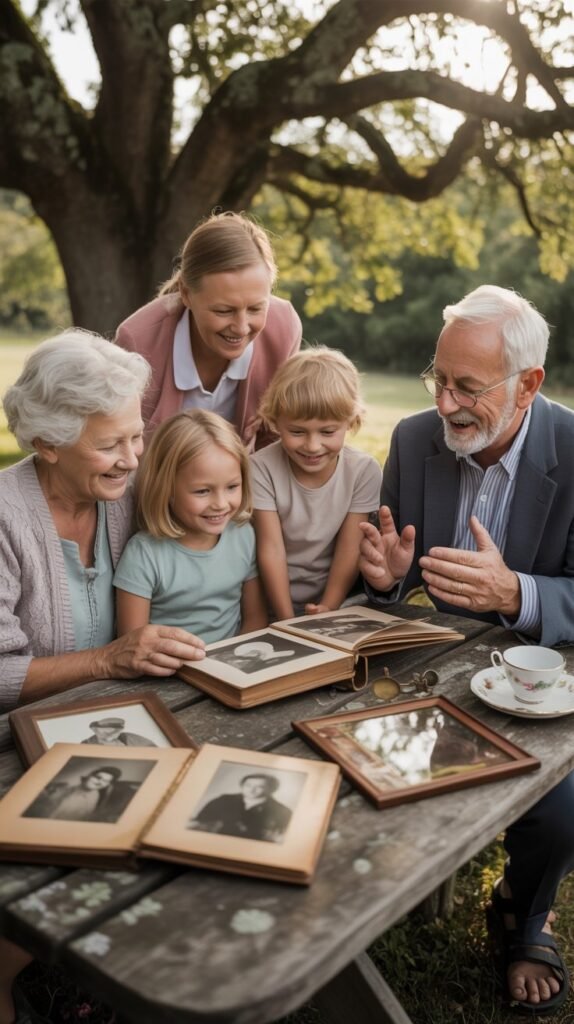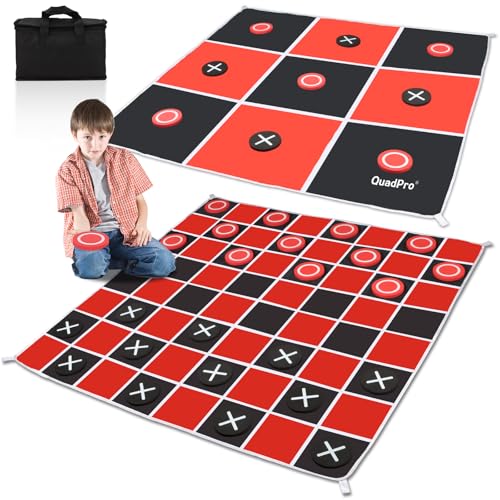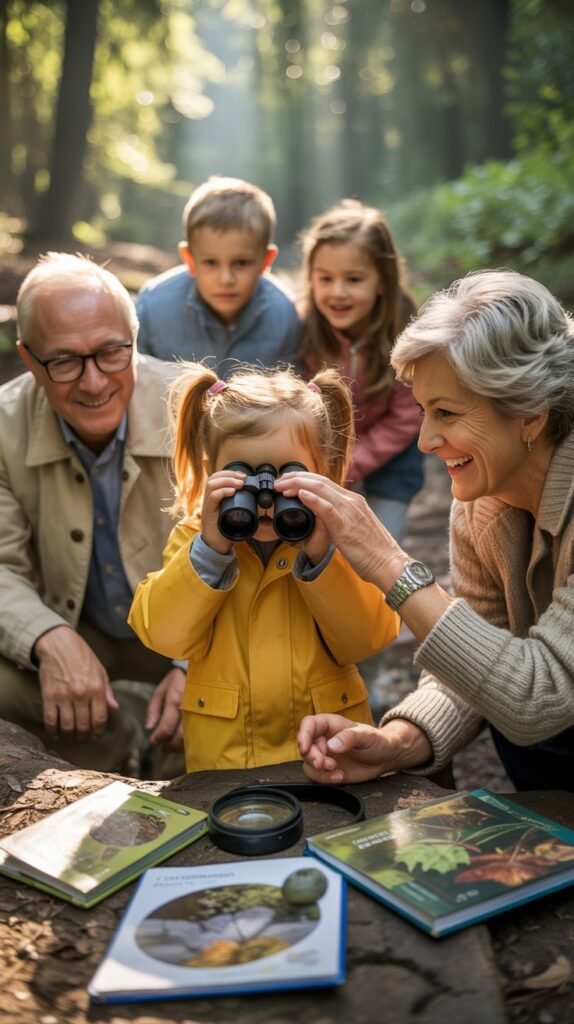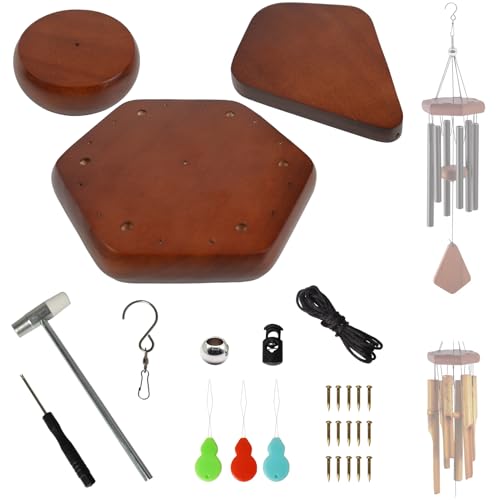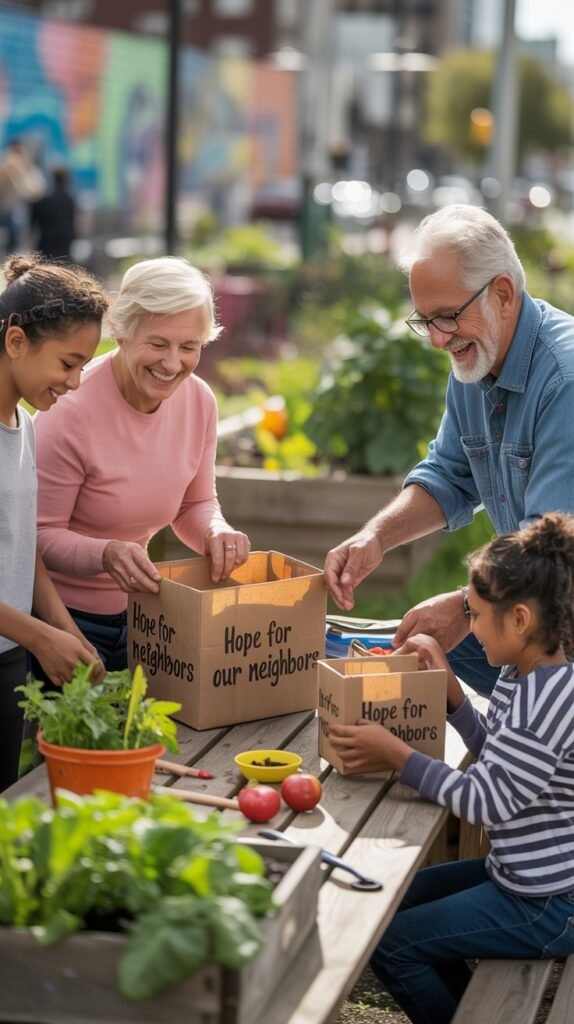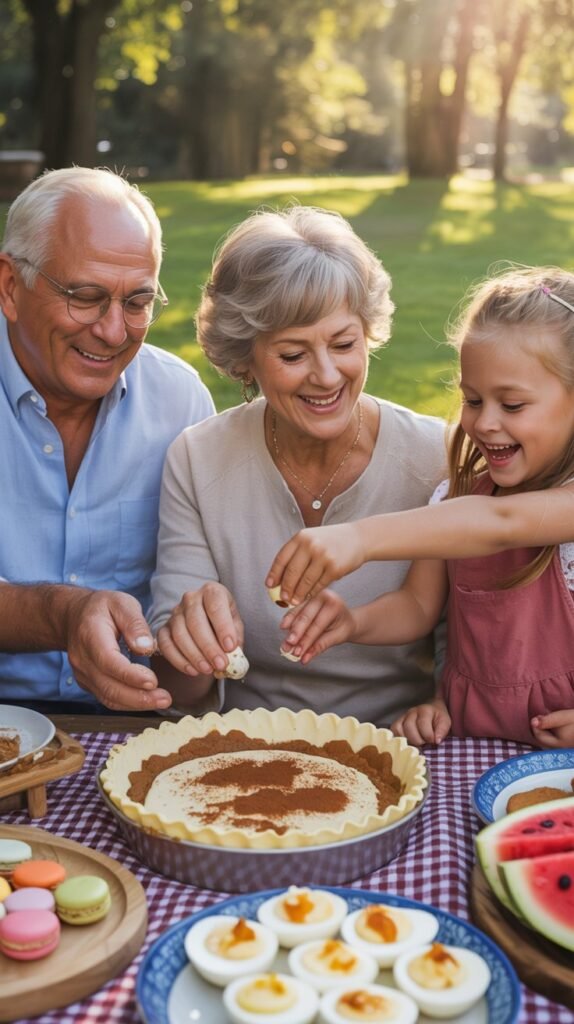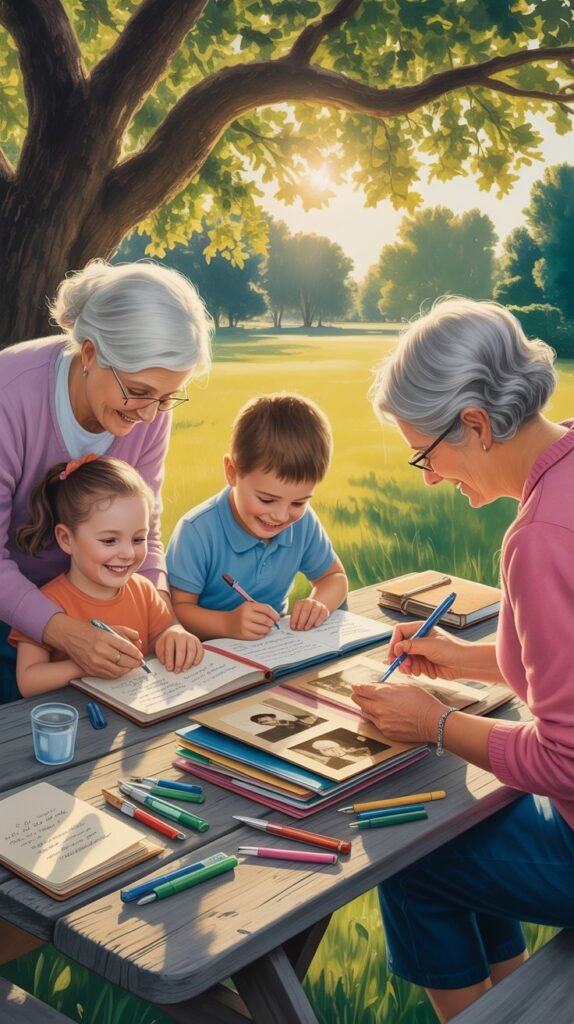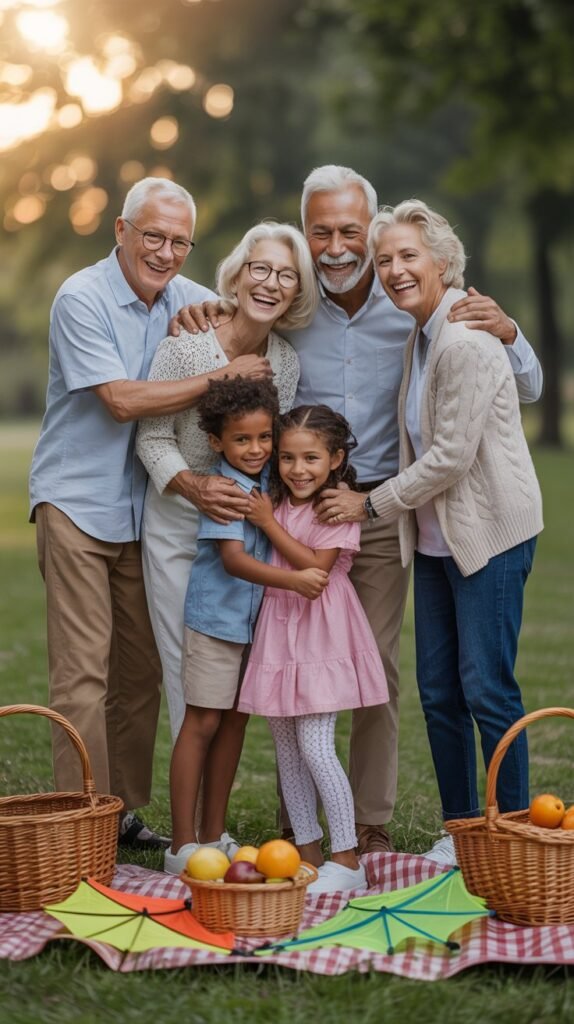Introduction: Creating Precious Memories Across Generations
There’s something absolutely magical about the relationship between grandparents and grandchildren—it’s pure love without the daily pressures of parenting, filled with patience, wisdom, and the joy of sharing life’s simple pleasures. And what could be simpler or more perfect than sharing sandwiches together outdoors, where conversations flow naturally and memories are made effortlessly?
Picnics provide the ideal setting for these precious relationships to flourish! The relaxed outdoor environment naturally encourages storytelling, laughter, and those spontaneous teaching moments that become treasured family memories. Without the distractions of daily routines or household chores, grandparents and grandchildren can focus entirely on each other, creating bonds that will last a lifetime.
The beauty of these gatherings is their simplicity—you don’t need elaborate plans or expensive activities. Sometimes the most meaningful moments happen when you’re just sitting on a blanket, sharing a peanut butter sandwich, and listening to Grandpa tell stories about “the old days” or watching Grandma show little hands how to braid grass into friendship bracelets.
Ready to create some magic of your own? Let’s explore these wonderful ways to bring generations together through the timeless tradition of outdoor dining and quality time. These aren’t just picnics—they’re investments in family relationships that will pay dividends for years to come!
1. Memory Lane Picnic Experience
Transform your picnic into a journey through time! Memory Lane picnics create wonderful opportunities for grandparents to share their life stories, family history, and experiences with grandchildren who are naturally curious about the past. These gatherings become precious bridges between generations, helping children understand their family heritage while giving grandparents the joy of sharing their memories.
Creating story-telling magic: Bring photo albums, family documents, or even old home movies on a tablet to spark conversations about family history. Grandchildren love hearing about what life was like “in the old days,” and these stories help them understand their place in the family story while building stronger connections with their grandparents.
The outdoor setting makes these conversations feel natural and unhurried. Without the pressure of formal interview settings, stories emerge organically, often prompted by questions children ask or memories triggered by the peaceful outdoor environment.
Planning Essentials
Comfort considerations: Provide plenty of comfortable seating with good back support for grandparents who may need to sit for extended periods. Consider portable chairs with cushions or thick blankets with back support pillows that make storytelling sessions comfortable for everyone.
Photo protection: Bring photo albums in protective cases or use digital copies on tablets to prevent damage from outdoor conditions. Consider laminated copies of special photos that children can handle freely without worry about damage to irreplaceable memories.
Memory prompts: Prepare conversation starters or questions that help draw out stories—”What was your favorite game when you were my age?” or “Tell me about your first job” can open wonderful discussions that might not happen spontaneously.
2. Teaching Traditions Picnic Workshop
Skills across generations: Teaching Traditions picnics focus on passing down family skills, cultural practices, or crafts that might otherwise be lost. Whether it’s Grandma’s special cookie recipe, Grandpa’s woodworking techniques, or traditional crafts from the family’s cultural heritage, these gatherings preserve important family knowledge while creating strong bonds.
Hands-on learning outdoors: The outdoor setting often makes learning more relaxed and enjoyable than indoor instruction. Children feel free to make mistakes, ask questions, and explore their creativity without worrying about making messes indoors. Grandparents often find teaching easier when they don’t have to worry about protecting furniture or floors!
These workshops create tangible results that children can take home—hand-knitted scarves, carved wooden toys, or jars of homemade jam become treasured keepsakes that remind them of special time spent with grandparents learning important family traditions.
Planning Essentials
Age-appropriate instruction: Adapt traditional skills to match grandchildren’s developmental abilities. Young children might help measure ingredients while older ones learn complete recipes. The goal is participation and connection rather than perfect skill execution.
Portable workshop setup: Plan for outdoor instruction by bringing portable work surfaces, adequate lighting, and weather protection for materials and projects. Consider projects that can be completed outdoors or easily transported inside if weather becomes challenging.
Documentation strategy: Take photos and videos of the learning process, not just finished products. These images capture the joy of learning together and preserve the teaching process for future generations to remember and potentially recreate.
3. Garden-to-Table Educational Picnic
Growing knowledge together: Garden-to-table picnics combine nature education with outdoor dining, creating opportunities for grandparents to share knowledge about plants, gardening, and where food comes from. These educational experiences help children develop appreciation for nature while learning valuable life skills from their grandparents.
Seasonal discovery adventures: Each season offers different learning opportunities—spring planting lessons, summer growth observation, autumn harvesting activities, or winter planning discussions. These seasonal connections help children understand natural cycles while providing regular opportunities for grandparent-grandchild bonding.
The hands-on nature of gardening creates natural teaching moments where grandparents can share both practical knowledge and life wisdom. Watching seeds grow becomes a metaphor for patience and nurturing, while tending plants together builds responsibility and care.
Planning Essentials
Educational preparation: Research age-appropriate gardening activities and plant identification for your local area. Bring simple field guides or plant identification apps that help both generations learn together about local flora and gardening principles.
Safety considerations: Plan for outdoor safety with appropriate clothing recommendations, sun protection, and awareness of potential plant allergies or hazards. Ensure all participants know which plants are safe to touch and taste.
Seasonal activity adaptation: Choose activities appropriate for the current season and weather conditions. Spring might focus on planting, summer on growth observation, autumn on harvesting, and winter on planning future gardens or indoor growing projects.
4. Story Time Under the Stars Picnic
Literary magic outdoors: Story Time Under the Stars combines the timeless tradition of reading together with the enchantment of outdoor evening gatherings. These special picnics create cozy, intimate settings where grandparents can share beloved children’s books while creating magical memories under the open sky.
Building reading traditions: These gatherings often become treasured family traditions that children look forward to regularly. The combination of grandparent attention, beloved stories, and the special atmosphere of outdoor evening time creates powerful positive associations with reading that can last a lifetime.
The outdoor setting adds natural magic to storytelling—real stars twinkling overhead, gentle evening breezes, and the cozy feeling of being together in nature enhance the wonder of good books and create multisensory memories that children treasure.
Planning Essentials
Lighting solutions: Plan adequate lighting for reading aloud while maintaining the magical atmosphere of evening outdoor time. Battery-powered lanterns, soft string lights, or even camping headlamps can provide necessary illumination without harsh brightness.
Comfort setup: Create cozy seating areas with plenty of soft blankets, cushions, and perhaps even sleeping bags for ultimate comfort during extended reading sessions. Consider portable chairs with cup holders for grandparents who prefer more structured seating.
Book selection strategy: Choose books appropriate for mixed ages if grandchildren vary in age, or plan separate reading sessions for different developmental levels. Include both classic favorites and new discoveries to create variety and maintain interest.
5. Gentle Games and Activities Picnic
Fun across all abilities: Gentle Games and Activities picnics focus on inclusive entertainment that works for various energy levels, mobility ranges, and age differences. These gatherings prove that fun doesn’t require high-energy activities—sometimes the most meaningful entertainment happens around a picnic table with a deck of cards and good company.
Cooperation over competition: The best intergenerational games emphasize cooperation, learning, and shared enjoyment rather than intense competition. Focus on activities where grandparents can teach, children can learn, and everyone can succeed regardless of their physical abilities or game experience.
These relaxed game sessions often become opportunities for natural conversation, gentle teaching moments, and the kind of unhurried bonding that builds strong relationships. The outdoor setting adds fresh air and natural beauty to classic indoor activities.
Planning Essentials
Inclusive game selection: Choose games that accommodate various physical abilities and cognitive levels—simple card games, gentle lawn games, puzzles, or strategy games that can be adapted for different skill levels while remaining enjoyable for everyone.
Weather-resistant supplies: Ensure game pieces and cards can withstand outdoor conditions. Consider laminated cards, magnetic game boards, or weather-resistant versions of favorite games that won’t be damaged by breeze or unexpected weather changes.
Comfortable gaming environment: Provide stable tables or surfaces for games requiring flat playing areas, comfortable seating for extended play, and adequate lighting if games extend into evening hours.
6. Nature Discovery Adventure Picnic
Curiosity and wonder together: Nature Discovery adventures combine outdoor dining with gentle exploration, encouraging both generations to observe and appreciate the natural world together. These experiences help children develop environmental awareness while giving grandparents opportunities to share their knowledge and encourage curiosity.
Learning through exploration: The best nature discoveries happen when curiosity leads the way rather than rigid educational plans. Grandparents often have patience for the slow observation that children need to really notice butterflies, examine interesting rocks, or watch clouds change shapes.
These adventures work at whatever pace feels comfortable for participants—some groups might enjoy gentle walks and nature observation, while others prefer settling in one beautiful spot and discovering everything it has to offer through careful observation.
Planning Essentials
Exploration tools: Bring simple tools that enhance nature observation—magnifying glasses, binoculars sized for children, field guides for local wildlife and plants, and collection containers for interesting (non-living) discoveries.
Safety and accessibility: Choose exploration areas appropriate for all participants’ mobility levels and plan routes that accommodate various physical abilities. Ensure everyone knows safety guidelines for outdoor exploration and wildlife observation.
Discovery documentation: Bring cameras, notebooks, or nature journals where participants can record their discoveries through photos, drawings, or written observations that can be reviewed and remembered later.
7. Arts and Crafts Creativity Picnic
Creative collaboration across generations: Arts and Crafts picnics provide wonderful opportunities for creative expression and skill sharing between grandparents and grandchildren. These gatherings often reveal hidden artistic talents while creating beautiful keepsakes that preserve memories of time spent together.
Natural inspiration and materials: The outdoor setting provides both inspiration and materials for creative projects. Leaf printing, flower pressing, nature collages, or rock painting use the environment itself as both muse and medium, creating unique artworks that capture the beauty of your gathering location.
Many grandparents have artistic skills or craft knowledge that they love sharing with grandchildren. These creative sessions become opportunities to pass down techniques while encouraging individual artistic expression and building confidence in creative abilities.
Planning Essentials
Project selection: Choose crafts appropriate for outdoor conditions and various skill levels. Consider projects that use natural materials, can handle some wind or weather variability, and create finished products that participants can take home as mementos.
Supply organization: Plan for outdoor crafting by bringing adequate work surfaces, weather-resistant supplies, cleanup materials, and storage for works in progress or finished projects that need protection during transport.
Skill adaptation: Design projects that can be adapted for different ages and abilities—simple versions for young children, more complex variations for older kids, and opportunities for grandparents to share their expertise while encouraging individual creativity.
8. Music and Movement Memory Picnic
Songs across the decades: Music and Movement picnics celebrate the universal language of music while sharing musical memories across generations. These gatherings often become wonderful opportunities for grandparents to share songs from their youth while learning about music that’s important to their grandchildren.
Gentle movement and dance: Include simple movement activities that work for various mobility levels—clapping along to music, gentle dancing, or even just swaying to familiar tunes. The goal is shared enjoyment and connection through music rather than performance or complex choreography.
Music has unique power to bridge generational gaps and create instant connections. Grandparents often discover that grandchildren love “old” songs, while grandchildren can introduce grandparents to new music that becomes surprisingly enjoyable when shared with people they love.
Planning Essentials
Musical equipment: Bring portable speakers, simple instruments like tambourines or maracas, and perhaps songbooks with lyrics to familiar tunes. Consider battery-powered equipment to avoid location limitations and ensure adequate volume for outdoor settings.
Song selection: Plan a mix of music that spans generations—classic children’s songs, popular music from grandparents’ youth, and current favorites that grandchildren can share. Include songs that encourage participation through singing, clapping, or simple movements.
Volume and space considerations: Be mindful of other park users and local noise regulations when planning musical activities. Choose locations where musical enjoyment won’t disturb others and where participants have adequate space for movement activities.
9. Cooking Wisdom Sharing Picnic
Culinary traditions in the fresh air: Cooking Wisdom picnics combine outdoor dining with hands-on culinary education, creating opportunities for grandparents to share family recipes, cooking techniques, and food traditions with eager grandchildren. These experiences often become treasured family memories while preserving important culinary heritage.
Safe outdoor cooking education: Focus on simple, safe cooking activities that can be managed outdoors—no-bake recipes, cold preparations, or simple cooking techniques using portable equipment with careful adult supervision. The goal is learning and bonding rather than complex culinary achievements.
Many family recipes and cooking techniques are traditionally passed down through hands-on teaching rather than written instructions. These cooking sessions preserve family culinary heritage while creating opportunities for grandparents to share stories about food traditions and family history.
Planning Essentials
Safety-first cooking: Plan cooking activities that minimize safety risks while maximizing learning opportunities. Consider no-heat recipes, simple assembly dishes, or carefully supervised basic cooking techniques that teach principles without creating hazardous situations.
Portable cooking setup: Organize cooking supplies for outdoor use with adequate work surfaces, proper food storage and temperature control, cleanup supplies, and any portable cooking equipment needed for planned recipes or demonstrations.
Recipe documentation: Bring notebooks or recipe cards where grandchildren can record family recipes and cooking tips they learn during the session. This documentation helps preserve family culinary traditions while giving children reference materials for future cooking.
10. Seasonal Celebration Tradition Picnic
Marking time together: Seasonal Celebration picnics create annual traditions that grandchildren can anticipate and treasure throughout their lives. These gatherings mark the passage of time while building family traditions that strengthen bonds and create shared experiences across generations.
Cultural and family heritage celebration: Use seasonal gatherings to share cultural traditions, family heritage, and holiday customs that might otherwise be lost. These celebrations help children understand their family’s background while creating new traditions that honor both past and present.
Regular seasonal gatherings become anchors in family life—events that everyone looks forward to and plans around. Over time, these traditions create a rhythm of connection that strengthens family relationships and provides stability and continuity across generations.
Planning Essentials
Annual tradition building: Plan seasonal activities that can become annual traditions—autumn leaf collecting and crafts, spring flower planting, summer fruit picking, or winter story sharing. The goal is creating anticipation and continuity that builds family bonds over time.
Cultural tradition integration: Respectfully incorporate cultural traditions and heritage celebrations that reflect your family’s background. These elements help children understand their cultural identity while creating opportunities for grandparents to share important family history.
Weather adaptation planning: Prepare for seasonal weather challenges with appropriate clothing recommendations, backup indoor plans, and activities that can be adapted for various weather conditions while maintaining the seasonal celebration focus.
11. Photography and Memory Making Picnic
Capturing moments together: Photography and Memory Making picnics focus on documenting family relationships while teaching photography skills and creating lasting visual memories. These gatherings often produce treasured photos that families cherish for generations while providing opportunities for artistic education and creative expression.
Teaching through creativity: Photography instruction becomes a natural vehicle for spending focused time together while learning new skills. Grandparents can share their knowledge about composition, lighting, or even just help grandchildren see the world through a different lens—literally and figuratively.
The outdoor setting provides endless photographic opportunities—beautiful natural backgrounds, interesting lighting conditions, and candid moments of family interaction that create authentic family documentation. These photos often become treasured family keepsakes that preserve memories of special time spent together.
Planning Essentials
Camera equipment accessibility: Provide cameras appropriate for various ages and skill levels—from simple disposable cameras for young children to digital cameras for older kids. Consider protective cases and straps that prevent expensive equipment damage during outdoor photography adventures.
Photography instruction planning: Plan simple photography lessons appropriate for different ages—basic composition for young children, lighting awareness for older kids, or even just learning to hold cameras steady and frame subjects properly.
Memory preservation strategy: Plan how photos will be shared, printed, or preserved after the gathering. Consider creating photo books, scrapbooks, or digital albums that participants can access and enjoy long after the picnic ends.
12. Simple Service Project Picnic
Teaching values through action: Simple Service Project picnics combine family bonding with community service, teaching children about helping others while strengthening family relationships through shared purpose. These gatherings show that family time can make positive impacts beyond just personal enjoyment.
Age-appropriate giving back: Choose service projects that allow meaningful participation from various ages while being manageable in outdoor settings. The goal is introducing children to the joy of helping others while spending quality time with grandparents who model community involvement and care for others.
These service-focused gatherings often become powerful family traditions that teach important values while creating strong bonds through working together toward common goals. Children learn that families can make differences in their communities while having fun together.
Planning Essentials
Service project selection: Choose projects appropriate for outdoor settings and various ages—assembling care packages, community garden maintenance, park cleanup, or creating items for donation to local organizations.
Community coordination: Work with local organizations to ensure service projects meet real community needs and follow proper procedures for volunteer activities involving children and families.
Celebration integration: Balance service work with celebration and reflection time that helps participants understand the impact of their efforts and feel good about their contributions to community well-being.
Special Considerations for Grandparent Gatherings
Mobility and accessibility planning: The most important aspect of grandparent picnics is ensuring that physical limitations don’t prevent participation or enjoyment. Plan gathering locations and activities that accommodate various mobility levels while maintaining dignity and independence for all participants.
Energy and timing considerations: Grandparents may have different energy patterns than younger family members. Plan gatherings with flexible timing, adequate rest opportunities, and activities that can be adjusted based on energy levels and comfort needs.
Creating comfort for extended gatherings: Provide comfortable seating with good back support, shade options for sun protection, easy access to restroom facilities, and climate considerations that help everyone stay comfortable throughout the gathering duration.
Practical accessibility strategies:
- Choose locations with level ground and easy parking access
- Provide comfortable chairs with arms and back support
- Plan activities that can be done sitting down
- Include frequent breaks and flexible scheduling
- Ensure adequate shade and weather protection
- Keep essential items easily accessible
Food Ideas That Bridge Generations
Nostalgic foods with modern appeal: Plan menus that include foods grandparents remember from their childhoods alongside current favorites that grandchildren love. Often, simple classic foods like homemade cookies, fresh fruit, or traditional sandwiches appeal to all generations.
Dietary accommodations: Consider health restrictions, dietary needs, and medication timing that might affect food choices and meal timing for grandparents. Plan inclusive menus that offer options for various dietary requirements while still feeling special and festive.
Cooking together opportunities: Include foods that grandparents and grandchildren can prepare together—simple sandwiches, fruit salads, or no-bake treats that create shared experiences while producing delicious results everyone can enjoy.
Foods that spark memories and conversations:
- Classic sandwich combinations that grandparents remember from their youth
- Traditional family recipes adapted for outdoor preparation
- Seasonal foods that connect to childhood memories and experiences
- Simple treats that can be made together during the gathering
- Comfort foods that feel special but aren’t complicated to prepare or eat
Making Every Grandchild Feel Special
Individual attention in group settings: When multiple grandchildren are present, plan ways to ensure each child receives individual attention from grandparents. This might mean rotating through different activities, having quiet one-on-one conversation times, or planning activities that naturally create small group interactions.
Age-appropriate inclusion: Design activities that can be adapted for different developmental stages so that toddlers, school-age children, and teenagers can all participate meaningfully. Often this means having multiple versions of activities or roles that match different abilities and interests.
Personality accommodation: Some grandchildren are naturally outgoing while others are more reserved. Plan a mix of activities that appeal to different personality types—quiet, reflective activities for introverted children and more interactive, social activities for extroverted grandchildren.
Strategies for inclusive gatherings:
- Plan activities with multiple complexity levels
- Include both active and quiet activity options
- Create opportunities for individual conversations
- Recognize different interests and talents
- Ensure adequate supervision for various age groups
- Plan take-home elements so every child has mementos
Documentation and Memory Preservation
Capturing precious moments: Plan systematic ways to document your special gatherings that go beyond just taking photos. Consider family journals, scrapbooks, video recordings of stories, or even audio recordings of grandparents sharing memories and wisdom.
Creating family history: Use these gatherings as opportunities to build ongoing family history documentation. Ask grandparents to share stories, record family recipes, or document family traditions that might otherwise be lost over time.
Involving children in documentation: Teach grandchildren to help with memory preservation through age-appropriate activities—drawing pictures of special moments, writing thank-you notes after gatherings, or helping organize photos and mementos from family adventures.
Memory preservation strategies that work:
- Take both posed and candid photos throughout gatherings
- Record grandparents telling stories or sharing wisdom
- Create ongoing family journals with input from all participants
- Collect mementos from special outings and activities
- Make scrapbook pages together during or after gatherings
- Write thank-you notes that document what was special about each gathering
Conclusion: The Lasting Gift of Shared Time
These simple picnic ideas represent so much more than just outdoor meals—they’re investments in relationships that will pay dividends for generations to come. In our fast-paced world, the gift of unhurried time together becomes increasingly precious and rare. When grandparents and grandchildren share sandwiches under the open sky, they’re creating bonds that will sustain and strengthen families for years to come.
The profound ripple effects: Children who experience regular, loving attention from grandparents develop stronger self-esteem, better social skills, and deeper family connections that benefit them throughout their lives. Meanwhile, grandparents who maintain active relationships with grandchildren often experience better physical and mental health, greater life satisfaction, and the joy of watching their family legacy continue.
Building traditions that last: Every picnic you plan, every story you encourage, every moment you facilitate between grandparents and grandchildren contributes to building family traditions that will be remembered and potentially repeated for generations. These simple gatherings often become the “remember when” stories that families tell for decades.
The beauty of these ideas is their accessibility—you don’t need special skills, expensive equipment, or elaborate plans to create meaningful experiences. All you need is the intention to bring generations together, some sandwiches to share, and the willingness to slow down and appreciate the precious relationships in your family.
So pack that picnic basket, gather those generations together, and start creating the memories that will become family treasures. In a world that often seems to pull families apart, these simple outdoor gatherings create the connections that hold families together. And that, more than any elaborate activity or expensive outing, is the greatest gift you can give to both the grandparents and grandchildren in your life!


